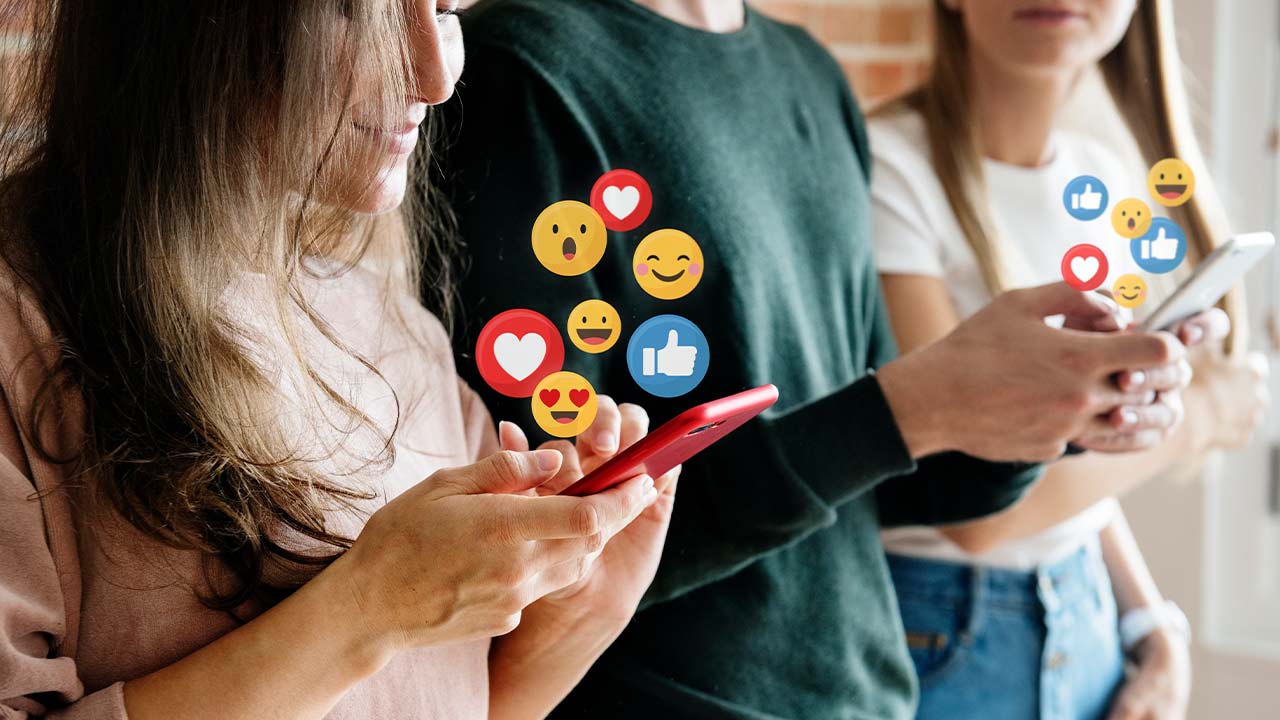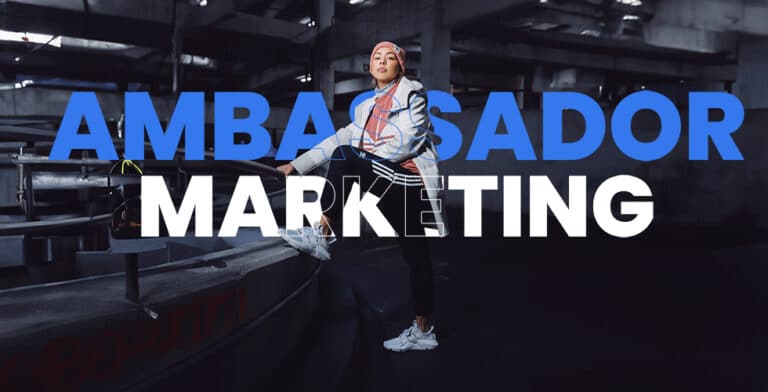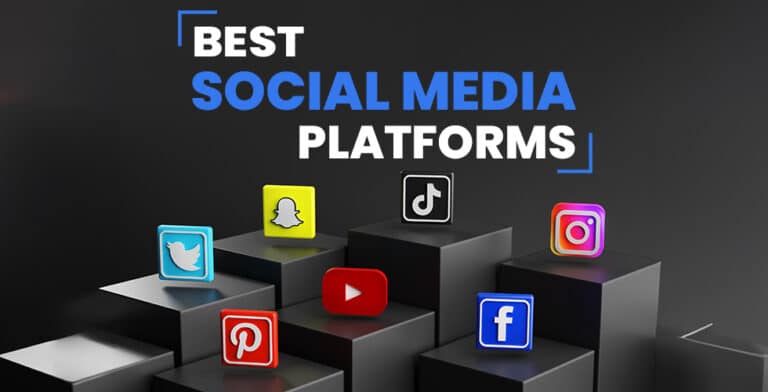If a college-goer person wants to buy a new laptop, the first thing he will do is check out reviews of that laptop by his preferred tech influencers. The decision of buying that laptop can be impacted by social media influencers because in today’s world social media influencers have arisen as important personas gaining attention and adoration from millions of young people.
With their fascinating and distinctive personalities, they carry the capacity to attract youth quite easily. They also use the ‘relatable” factor to convince the youth of their relevance since traditional celebrities and their lifestyle can be far-fetched sometimes.
These influencers have the ability to change ideas, affect trends, and have a profound impact on the lives of youth. However, as their influence grows, it becomes vital to critically assess the consequences they may have on the sensitive minds of youth. The impact of social media influencers on youth ranges from stimulating creativity and establishing a feeling of community to driving materialism and promoting unrealistic ideals.
In this article, we will delve deep into the multifaceted ways social media influencers leave their impact on the lives of young people, revealing both the positive and harmful sides.
Statistics on Influencers’ Impact on Youth
The evidence of some eye-opening statistics indicates what power influencers have on youth. A staggering 72% of Gen-Z and millennials regularly follow influencers on various social media platforms, according to a Morning Consult survey, demonstrating the enormous reach and popularity of these influencers.
When it comes to specific interests, 62% of men are drawn to gaming channels, while 59% of women are drawn to fashionistas. Notably, 88% of Gen-Z and millennials use social media to learn about their favorite brands, with a huge 56% making purchases based on such influencer endorsements. These figures highlight the critical role that influencers play in determining customer behavior and purchasing decisions.
Furthermore, platform preferences show that 94% of males follow influencers on YouTube, demonstrating the platform’s dominance as a medium for male engagement, but 83% of women connect with influencers on Instagram. These data demonstrate the enormous influence that social media influencers have on today’s youth’s preferences, choices, and purchase habits.
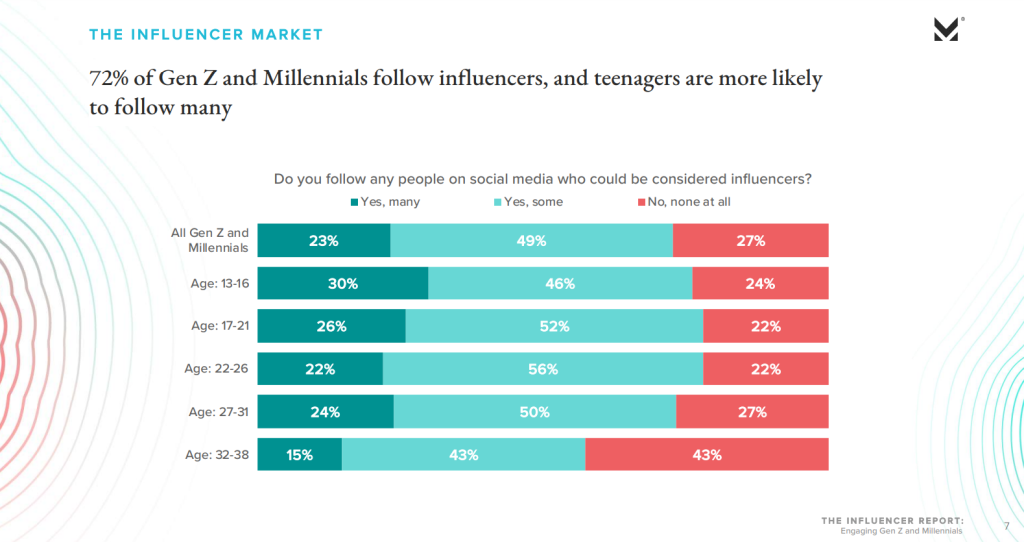
Social Media Influencers’ Positive Impact On Youth
Social media influencers are significant because they may inspire creativity, establish a feeling of community, and provide advice and support on a variety of aspects such as personal growth, education, mental health, and job aspirations through their content.
Their influence extends beyond entertainment, making them valuable voices capable of driving constructive change and empowering young people to navigate the digital landscape with confidence and purpose. Let’s discuss their positive impact in detail:
Roles Models and Inspiration
Jay Shetty is a famous influencer who uses his impact as a way to make today’s youth aware of self-positivity and personal growth. He has become an overnight sensation with his message-driven content. He is a former monk who believes in self-improvement and this helps him to offer strong teachings on mindfulness, productivity, and purposeful life.
Jay Shetty’s videos and posts encourage young people to develop a development mindset, embrace positivism, and discover their inner potential. This is how a social media influence can become a role model and an inspiration to youth as they play a vital role in encouraging personal growth by providing guidance, motivation, and inspiration. They offer valuable insights, practical tips, and personal experiences through their content that can empower young individuals to develop and reach their full potential.
Igniting Curiosity in Youth
Social media influencers have a unique capacity to pique the interest of young people by infusing information into their material. They not only entertain but also educate through their platforms, inspiring young people to investigate new topics, broaden their knowledge, and embrace a hunger for learning.
Vsauce is a popular science and education channel on YouTube run by Michael Stevens. He offers engaging and thought-provoking videos that explore various scientific ideas, historical occurrences, and philosophical issues. Vsauce arouses young interest and inspires them to explore the world’s treasures by combining captivating images, compelling storytelling, and expert insights.
Community building
Tyler Oakley, a famous YouTuber has cultivated a supportive and inclusive online community through his LGBTQ+ advocacy and positive messaging. Another influencer making a significant impact is Lilly Singh, also known as Superwoman. Through her comedic and motivational content, Lilly promotes unity, female empowerment, and cultural diversity.
She actively engages with her audience, encouraging them to embrace their uniqueness and strive for their dreams. By fostering a sense of community, she empowers young individuals to celebrate their identities and create positive change in the world. This is how these influencers empower young individuals to find a sense of belonging and expand their social horizons by fostering connections, promoting inclusivity, and providing platforms for engagement.
Smart Purchasing Decisions
A lot of consumer goods nowadays are quite expensive since they come with more added features and advantages. Since the younger generation is more drawn toward gadgets and tech-related goods, the tech-influencers have become a building block of their purchasing decision. One influencer who is known for providing honest product reviews is Marques Brownlee, also known as MKBHD.

As a prominent tech influencer on YouTube, he thoroughly tests and analyzes various gadgets, smartphones, and tech accessories, providing in-depth reviews that are trusted by millions. Marques’ honest approach and attention to detail enable young viewers to make well-informed decisions when it comes to purchasing tech products.
Relatable Content
The relatability of social media influencers, distinguishing them from traditional movie stars and celebrities, is one of the reasons young people can relate to them. Influencers frequently reveal details about their personal lives, experiences, and challenges, which makes them more approachable and sympathetic to their audience. This relatability fosters a connection and familiarity with young people, leading to a higher degree of engagement and trust.
Emma Chamberlain is one influencer who excels at relatability. Emma is known for her candid vlogs that capture everyday occurrences in her life, highlighting her genuine personality and relatable experiences. Her down-to-earth demeanor and honesty make her immensely accessible to her youthful audience, who value her honesty and find solace in her relatability.
Mental health and well-being support
The mental health issue is one of the predominant issues of the modern world which has affected the younger generation the most as much as affecting the older generation through all the wars and natural disasters. Influencers rendering their helping hand by creating content with mental health advocacy is one of the vital reasons why they will always be relevant.
We can talk about Kati Morton who is a licensed therapist and mental health advocate. She educates her young audience about various mental health conditions offers practical advice through social media platforms and also shares personal stories of recovery. Her empathetic approach and informative content empower young people to seek help, reduce stigma, and take steps toward improving their mental well-being.
Diversity and representation
Social media influencers also have become the voice of diversity and representation. These influencers challenge stereotypes, tear down barriers, and encourage young people to embrace tolerance and open-mindedness by showcasing different voices, experiences, and perspectives in their material. Chesca Leigh is a comedian and content developer from the United Kingdom.
Chesca uses her platform to highlight racial, gender, and body acceptance concerns. Her illustrations and dialogues question cultural conventions and inspire young people to defy stereotypes and celebrate the diversity that exists within themselves and others.
In addition, beauty and lifestyle influencer Nabela Noor advocates inclusion and body positivity. Nabela speaks honestly about her experiences as a South Asian Muslim woman, and she campaigns for representation and self-acceptance. Her work encourages young people to embrace their individuality while also challenging beauty norms, encouraging a more inclusive and welcoming mindset.
Entrepreneurship and career inspiration
Social media influencers use their platforms to discuss their entrepreneurial adventures, provide valuable insights, and provide practical guidance that inspires young people to take ownership of their professional lives. One of them is Gary Vaynerchuk, often known as GaryVee, who is an entrepreneur and career inspiration expert.
Gary’s films, podcasts, and social media content showcase his knowledge of business, marketing, and entrepreneurship. He urges young people to follow their dreams, work hard, and take possibilities in today’s digital world. Gary’s encouraging remarks and practical counsel encourage young people to achieve their entrepreneurial dreams.
Negative Impacts of Social Media Influencers on Youth
Social media influencers can have both positive and negative impacts on youth. While many influencers provide valuable content and serve as positive role models, there are also some negative aspects associated with their influence. Here are some of the potential negative impacts of social media influencers on youth:
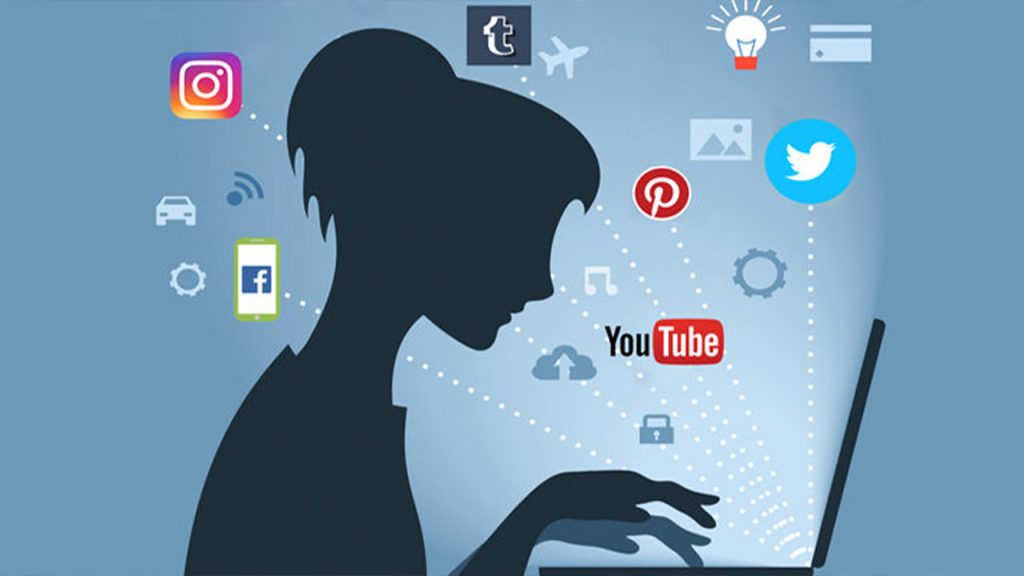
Promotion of unattainable beauty standards
While social media influencers can inspire and motivate, there are times when they might inadvertently promote unrealistic beauty standards to the young generation. Numerous influencers have faced criticism for promoting unattainable beauty standards.
They have been accused of presenting an unrealistic representation of beauty, frequently acquired through cosmetic modifications and photo editing, due to their lavish lifestyles and meticulously manicured photographs. This might lead to a distorted view of attractiveness and body image among their young followers. This is how some influencers may contribute to young people’s self-esteem issues by creating an idealized and unrealistic version of beauty that is unattainable.
Shaping values based on material possessions
Some influencers may unintentionally encourage a materialistic worldview by displaying abundant lives, fancy objects, and frequent consumption, which can lead to young people prioritizing material possessions as a measure of success and pleasure.
The “luxury lifestyle” influencer segment is one example of an influencer who has been chastised for promoting materialistic values. These influencers frequently exhibit an extravagant lifestyle that includes high-end apparel, luxury travel, and pricey goods. By continuously emphasizing material prosperity as a symbol of success and happiness, they may unknowingly change their audience’s values to emphasize material goods as a measure of success.
Social Comparison
Unintentionally social media influencers can make young people compare their normal lives to the supposedly affluent lives of influencers, resulting in feelings of inferiority and inadequacy. Influencers frequently offer a highlight reel of their lives, including lavish vacations, fancy attire, and luxurious events. This tailored content might create an artificial standard of life against which young people may feel forced to measure themselves, leading to feelings of discontent and an inferiority complex.
Some travel influencers attracted criticism for contributing to such comparisons as well. These influencers routinely share beautiful destinations, plush accommodations, and lavish experiences, which might give the impression that perpetual travel and lavish living are the norms. This has the potential to influence young people.
Promotion of risky behaviors
While the majority of social media influencers seek to inspire and entertain their followers, some influencers have pushed unsafe and unusual conduct that can harm young people. Their content may encourage dangerous challenges, damaging pranks, or extreme activities that can jeopardize the well-being and safety of youth.
The “Tide Pod Challenge,” which gained popularity in 2018, is one such example. Influencers and online users posted films of themselves biting or eating laundry detergent pods, posing major health hazards. The challenge’s viral nature persuaded impressionable youth to participate in the deadly challenge, resulting in poisoning and hospitalization.
Reduced face-to-face interactions
Although social media influencers are frequently connected to a large online community, they can inadvertently contribute to the anti-socialization of the younger generation by establishing the notion that the online world is the major source of connection and approval. The growth of influencers who primarily focus on online gaming content is one example of this phenomenon.
While professional gaming influencers or eSports gamers can provide enjoyment and help establish communities around similar interests, excessive gaming content consumption can lead to a distorted viewpoint in which virtual interactions take precedence over real-world relationships. As a result, young people may spend too much time alone behind screens, thereby limiting prospects for offline social connection and development.
Spread of misinformation and harmful content
Because of their broad reach and impact, social media influencers have the power to propagate misinformation and harmful content, sometimes unintentionally. This can happen when influencers post incorrect information, advocate unproven products or therapies, or spread toxic ideas without fact-checking or thinking about the ramifications of their work.
One famous example of disinformation spreading is the promotion of pseudoscientific practices or unproven medical therapies by health and wellness gurus. Some influencers, for example, have been caught supporting cults. The famous beauty YouTuber Michelle Phan started promoting a cult and it came across as an alarming promotion from her considering it can impact her followers to follow her footsteps. Many other news channels showed concern over it.
Promoting Responsible Engagement
There at least needs to be some regulation that influencers will have to abide by and cannot break at any cost. Several methods can be implemented to counteract the harmful effects of social media influencers and promote responsible interaction.
First, influencers should promote authenticity, openness, and fact-checking to avoid spreading misinformation through their content.
Second, platforms and regulatory agencies can implement standards and regulations that encourage responsible content creation while discouraging destructive activity.
Third, encouraging young people to develop media literacy and critical thinking skills might help them navigate influencer content more effectively.
Fourth, encouraging young people to balance online activity with real-life contacts and activities by enabling open talks about the possible hazards of social media.
Finally, responsible influencers who prioritize beneficial outcomes should be supported and amplified.
Our Takeaway
Social media influencers have a large influence on young people, with both positive and harmful outcomes. They can promote unreachable expectations, materialism, comparison, dangerous behavior, and misinformation while also inspiring personal growth, curiosity, and community building.
Responsible involvement, critical thinking, media literacy, and a balanced approach to online interactions are vital for mitigating harmful effects and maximizing good potential. We can ensure that social media influencers become agents of positive change in the lives of young people by cultivating an informed and mindful digital culture.

